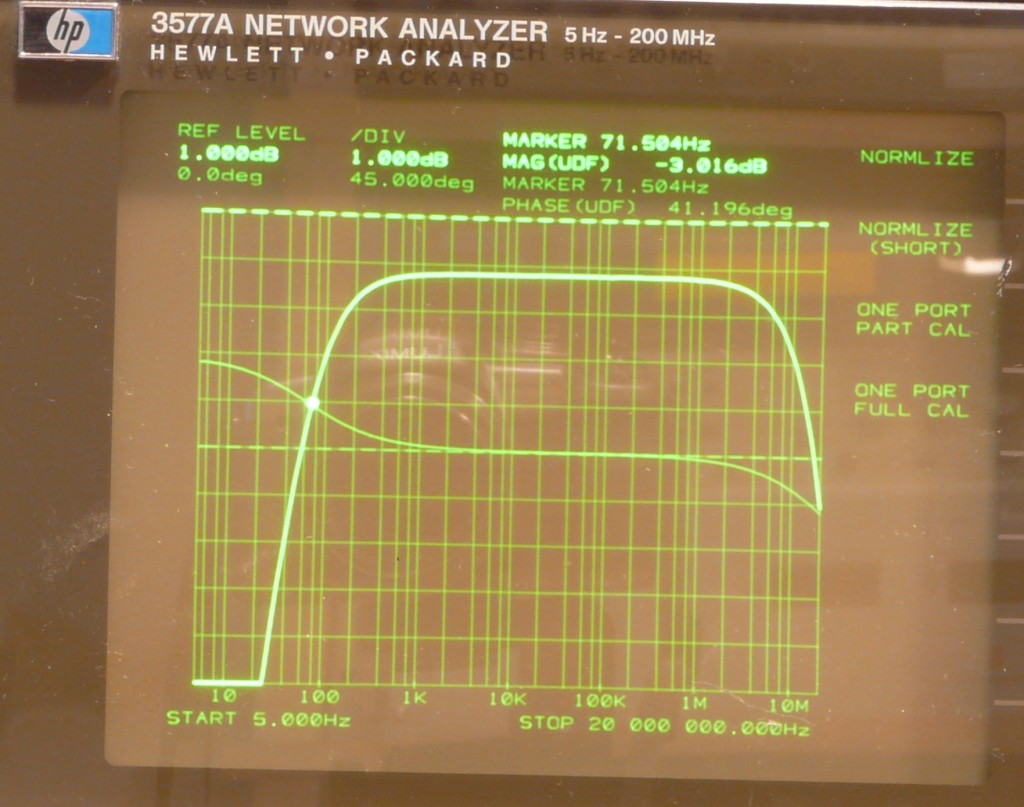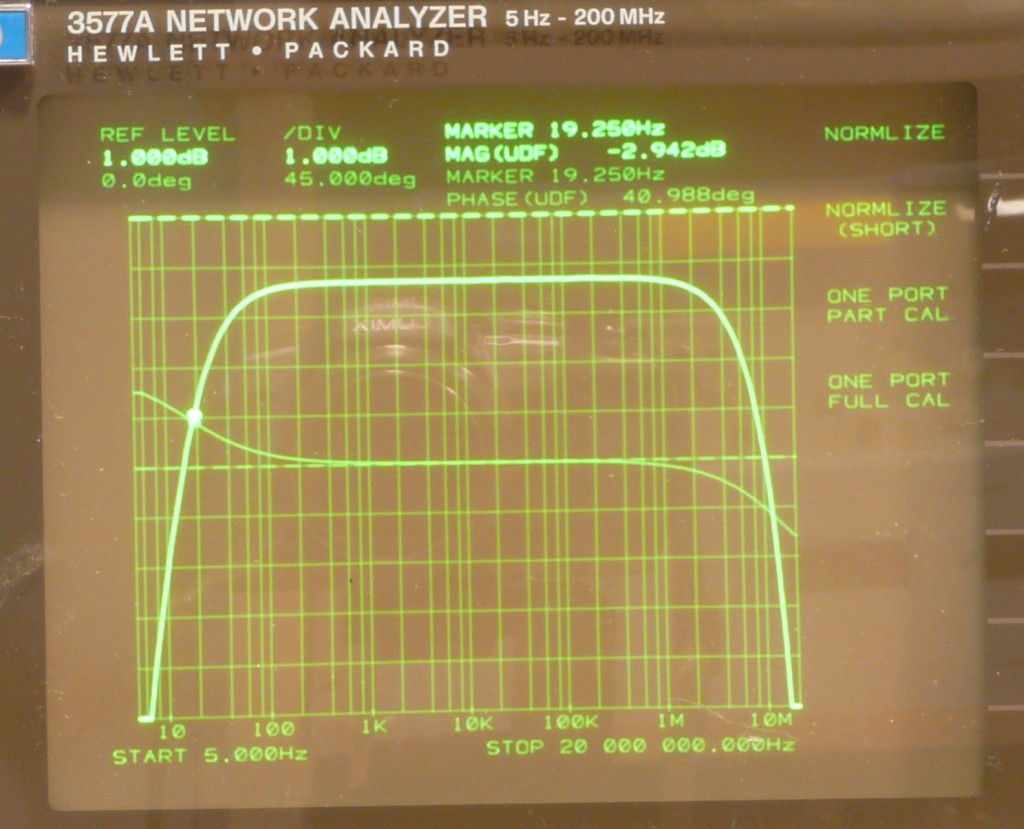Made another two transformers using that salvaged VAC core. Used bifilar (non-twisted) winding, PTFE isolated.
Results
1st one made with one layer of turns, resulting in about 30 turns, the core has 62µH/n²
-3dB response is from 71Hz to 14MHz, one can see about 0.2dB transmission loss.
The former one that was wound using twisted pair from ethernet cable has near zero losses, so I believe these losses are due to the wire's resistance.


2nd one made with two layers of turns, about four times the magnetizing inductance, resulting in
-3dB response from 19Hz to 8.4MHz, somewhat more loss, maybe 0.3dB. It's not exactly a fourth of the 1st ones LF response, this is because I cut the wire somewhat too short, wasn't enough for 60 turns.


And now for something completely different:
I've connected them to the TDR to measure the wire length and see the transmission line's impedance:
Todays 1st one:

Todays 2nd:

And for comparison, this one from last week to point out the difference between bifilar and twisted pair winding:


One can clearly see, the impedance over wire length is flatter for the twisted pair, but it appears to have none or very little effect on the frequency response.